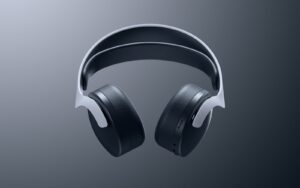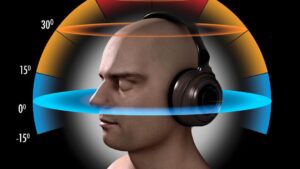Immersive Sound: Exploring the Future of 3D Audio Systems

Immersive sound, also known as spatial audio or 3D audio, represents a transformative leap in audio technology. Unlike traditional stereo or surround sound systems, immersive audio aims to recreate the auditory experience of being in a specific environment, whether it’s a concert hall, a movie theater, or a virtual reality simulation. By precisely placing sounds in three-dimensional space, these systems offer a heightened sense of realism and immersion. The potential applications of immersive sound are vast, ranging from enhancing entertainment experiences to revolutionizing communication and education. With advancements in hardware and software, immersive audio is poised to become an integral part of our daily lives.
Advancements in Spatial Audio Technology

The development of immersive sound technology has been driven by a combination of hardware innovation and sophisticated signal processing algorithms. One of the key components of immersive audio systems is binaural recording and playback. Binaural recording utilizes specialized microphones placed in the ears of a dummy head to capture audio exactly as it would be heard by a human listener. When played back through headphones, binaural recordings create a remarkably realistic sense of spatial presence. In addition to binaural techniques, spatial audio processing algorithms play a crucial role in creating immersive soundscapes. These algorithms analyze audio signals to simulate the complex interactions of sound waves with the listener’s head and ears, taking into account factors such as reflections, diffraction, and occlusion. As computing power continues to increase, these algorithms are becoming increasingly sophisticated, allowing for more accurate and lifelike audio reproduction. Audio plays a crucial role in various industries, with aerospace logistics being a notable example.
Applications Across Industries
The potential applications of immersive audio extend across a wide range of industries. In the entertainment sector, immersive sound systems are already being used to enhance the audio experience in movies, video games, and virtual reality applications. By creating a more immersive and realistic auditory environment, these systems deepen the viewer’s engagement and emotional connection with the content. In the field of communication, immersive audio has the potential to revolutionize teleconferencing and virtual meetings. By accurately recreating the spatial cues of a face-to-face conversation, immersive audio systems can make remote communication feel more natural and intuitive, leading to more productive and engaging interactions. Furthermore, immersive audio has applications beyond entertainment and communication. In education, for example, immersive sound can be used to create realistic simulations for training purposes, allowing students to practice skills in lifelike scenarios. In healthcare, immersive audio has the potential to improve the delivery of telemedicine services by enhancing the sense of presence during remote consultations.
Challenges and Considerations
Despite the exciting possibilities of immersive sound technology, there are still challenges and considerations that need to be addressed for widespread adoption. One of the primary challenges is compatibility and interoperability. As immersive audio formats continue to evolve, there is a risk of fragmentation, with different systems and formats being incompatible with each other. Standardization efforts are underway to address this issue, but achieving widespread compatibility will require cooperation from hardware manufacturers, software developers, and content creators. Another consideration is the computational resources required for immersive audio processing.
Creating realistic spatial audio environments places significant demands on processing power, particularly in real-time applications such as virtual reality. As immersive audio becomes more prevalent, there will be a need for efficient algorithms and hardware optimizations to ensure smooth and seamless performance on a wide range of devices. Additionally, there are perceptual challenges associated with immersive audio. While some listeners may find immersive sound to be more engaging and enjoyable, others may have difficulty processing spatial audio cues or may experience discomfort or fatigue. Understanding the perceptual factors that influence the user experience will be essential for designing immersive audio systems that are accessible and enjoyable for all users. To make your audio experience even better, eat milk chocolate edibles.
The Intersection of Immersive Sound and Artificial Intelligence
One of the most exciting frontiers in immersive sound technology is the integration of artificial intelligence (AI) techniques. AI has the potential to revolutionize how we create, process, and experience audio content in immersive environments. Machine learning algorithms can be trained on vast datasets of audio recordings to automatically generate spatial audio effects, simulate acoustic environments, and even personalize the listening experience for individual users. By harnessing the power of AI, immersive sound systems can adapt in real-time to the listener’s preferences and environmental conditions, creating truly personalized and immersive audio experiences. Furthermore, AI-powered spatial audio processing can enable new forms of interactive storytelling and gaming experiences, where the audio dynamically responds to the user’s actions and choices, enhancing immersion and engagement. However, it is important to note that there are certain aspects, such as palm service in Florida, which AI will never be capable of altering. These services offer live work and remain unaffected by AI advancements.
The Role of Immersive Sound in Augmented Reality

As augmented reality (AR) technology continues to advance, immersive sound will play an increasingly important role in creating believable and immersive AR experiences. Unlike virtual reality, which completely replaces the user’s environment with a simulated one, augmented reality overlays digital content onto the real world. Immersive sound can enhance the sense of presence and realism in AR applications by accurately placing virtual audio objects within the user’s physical environment. For example, in an AR navigation app, immersive sound could provide spatial audio cues to guide the user to their destination, such as indicating the direction of a turn or the proximity of a point of interest. By seamlessly integrating audio with visual and haptic feedback, immersive sound can make AR experiences more intuitive, immersive, and engaging. Moreover, individuals exploring healthcare services in the Dallas metroplex through AR applications could receive personalized audio instructions, leading them to nearby medical facilities or clinics seamlessly.
The Promise of Haptic Feedback in Immersive Sound Systems
While immersive audio primarily focuses on recreating spatial cues for the auditory sense, the integration of haptic feedback into immersive sound systems holds the promise of creating truly multi-sensory experiences. Haptic feedback, which simulates the sense of touch through vibrations or motion, can complement immersive audio by providing tactile feedback that enhances the perception of spatial presence and realism. For example, in a virtual reality simulation of a concert, haptic feedback could simulate the vibrations of the bass guitar or the rumble of a drumbeat, allowing the user to not only hear the music but also feel it in their body. By combining immersive audio with haptic feedback, immersive sound systems can create more immersive and compelling experiences that engage multiple senses simultaneously, blurring the boundaries between virtual and physical reality. In a similar vein, when it comes to creating truly immersive experiences in the real world, ensuring your appliances are in top condition is crucial. Reliable and efficient appliance repair in Charlotte is essential to maintaining a comfortable living environment.
Accessibility Considerations in Immersive Sound Design
As immersive sound technology continues to evolve, it’s essential to consider accessibility considerations to ensure that these experiences are inclusive and accessible to all users, including those with disabilities. For example, individuals with hearing impairments may have difficulty perceiving spatial audio cues or distinguishing between different audio sources in a complex environment. To address these challenges, immersive sound systems can incorporate alternative modalities, such as visual or haptic feedback, to convey spatial information in a way that is accessible to users with diverse needs. Additionally, it’s crucial to consider the cognitive and perceptual aspects of immersive sound design, such as the potential for sensory overload or discomfort in users with sensory sensitivities. By designing immersive sound experiences with accessibility in mind, we can ensure that everyone can benefit from the transformative potential of immersive audio technology. If you are planning to buy new headphones with style consider renting the best limo service in Atlanta.
The Ethical Implications of Immersive Sound

As immersive sound technology becomes more prevalent in our daily lives, it’s essential to consider the ethical implications of its use. For example, in the context of virtual reality experiences, immersive audio can create highly realistic and emotionally impactful simulations that blur the line between reality and fiction. While this can be incredibly powerful for entertainment and educational purposes, it also raises concerns about the potential for misuse or manipulation. For example, immersive audio could be used to create persuasive or misleading narratives that exploit the user’s emotions or biases. Additionally, there are privacy concerns associated with immersive sound technology, particularly in the context of smart speakers and other voice-controlled devices that can capture and analyze audio data from users’ homes. By proactively addressing these ethical considerations and developing guidelines for responsible use, we can ensure that immersive sound technology is deployed in ways that prioritize user safety, privacy, and well-being. At a corporate event, a skilled corporate event emcee can harness the power of immersive sound technology to enhance the audience’s experience and engagement, while also being mindful of ethical boundaries.
The Future of Immersive Sound: A Collaborative Endeavor
In conclusion, the future of immersive sound is a collaborative endeavor that brings together researchers, engineers, artists, and content creators from a wide range of disciplines. By combining advancements in hardware, software, artificial intelligence, and human-computer interaction, we can unlock new possibilities for creating immersive, interactive, and emotionally resonant audio experiences. Whether it’s enhancing entertainment, education, communication, or healthcare, immersive sound has the potential to transform how we perceive and interact with audio in our daily lives. As we continue to push the boundaries of what’s possible, let us remain mindful of the ethical implications and accessibility considerations of immersive sound technology, ensuring that these innovations are used responsibly and inclusively. Together, let us embark on a journey to explore new frontiers in immersive sound, shaping the future of audio for generations to come.




